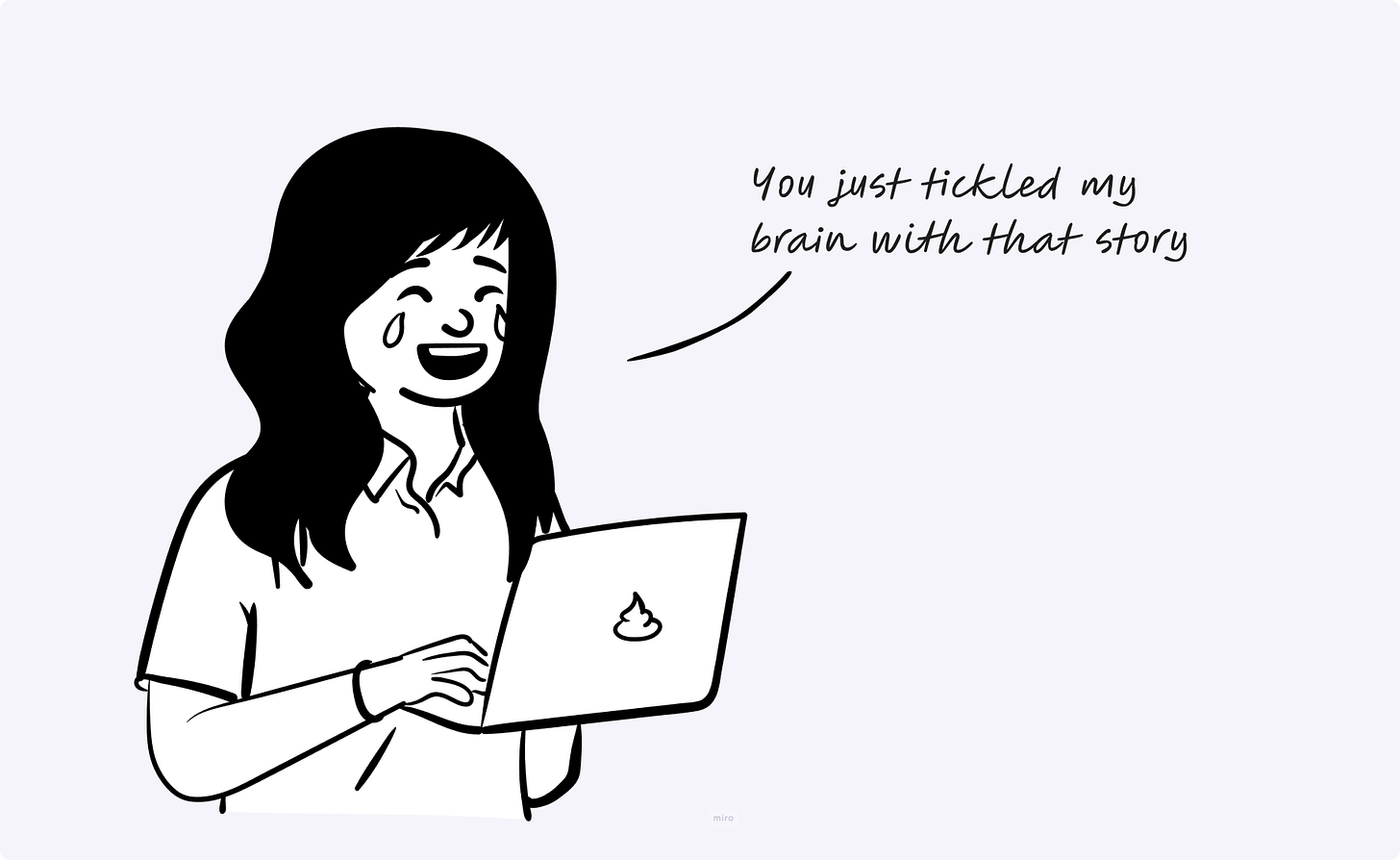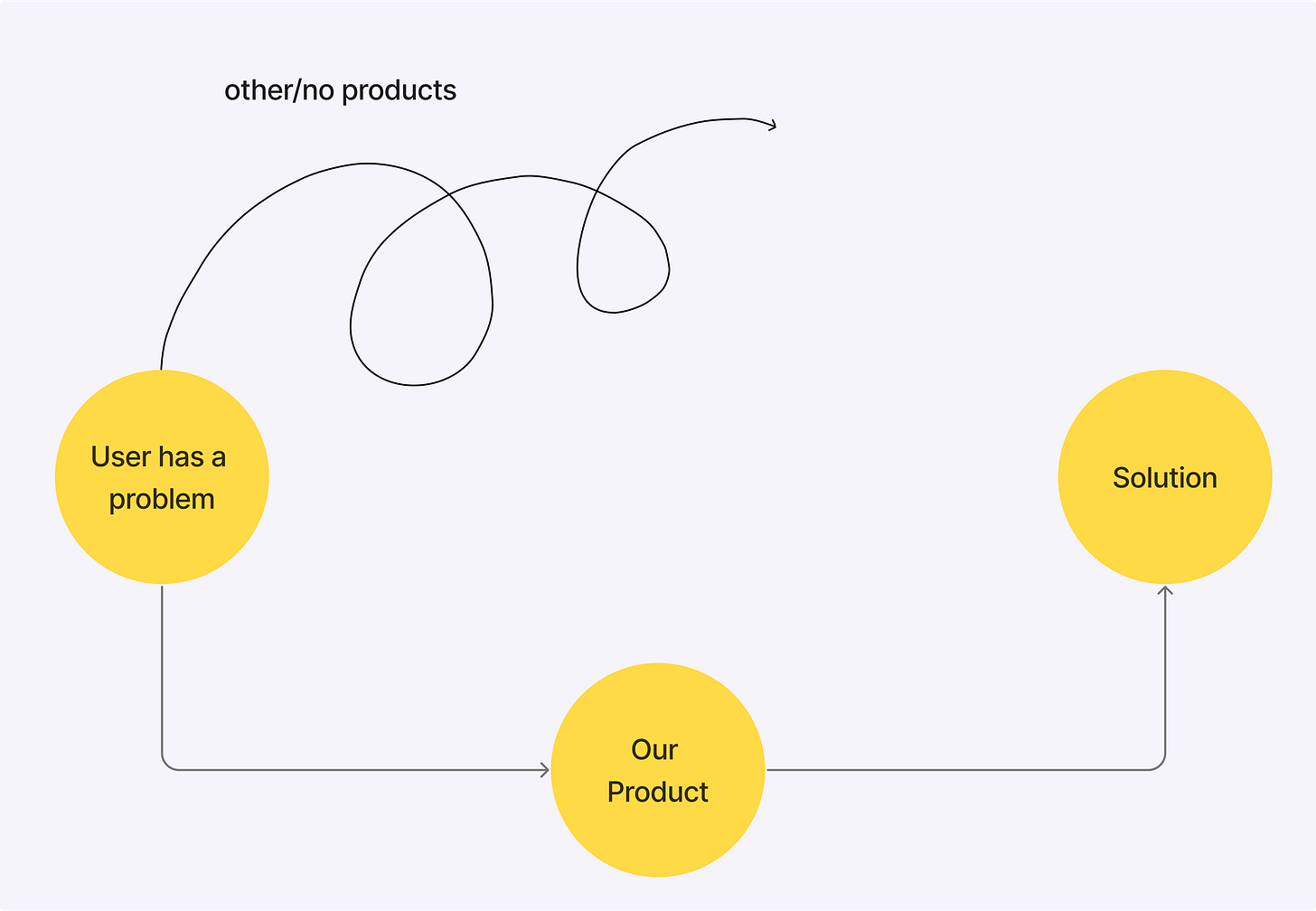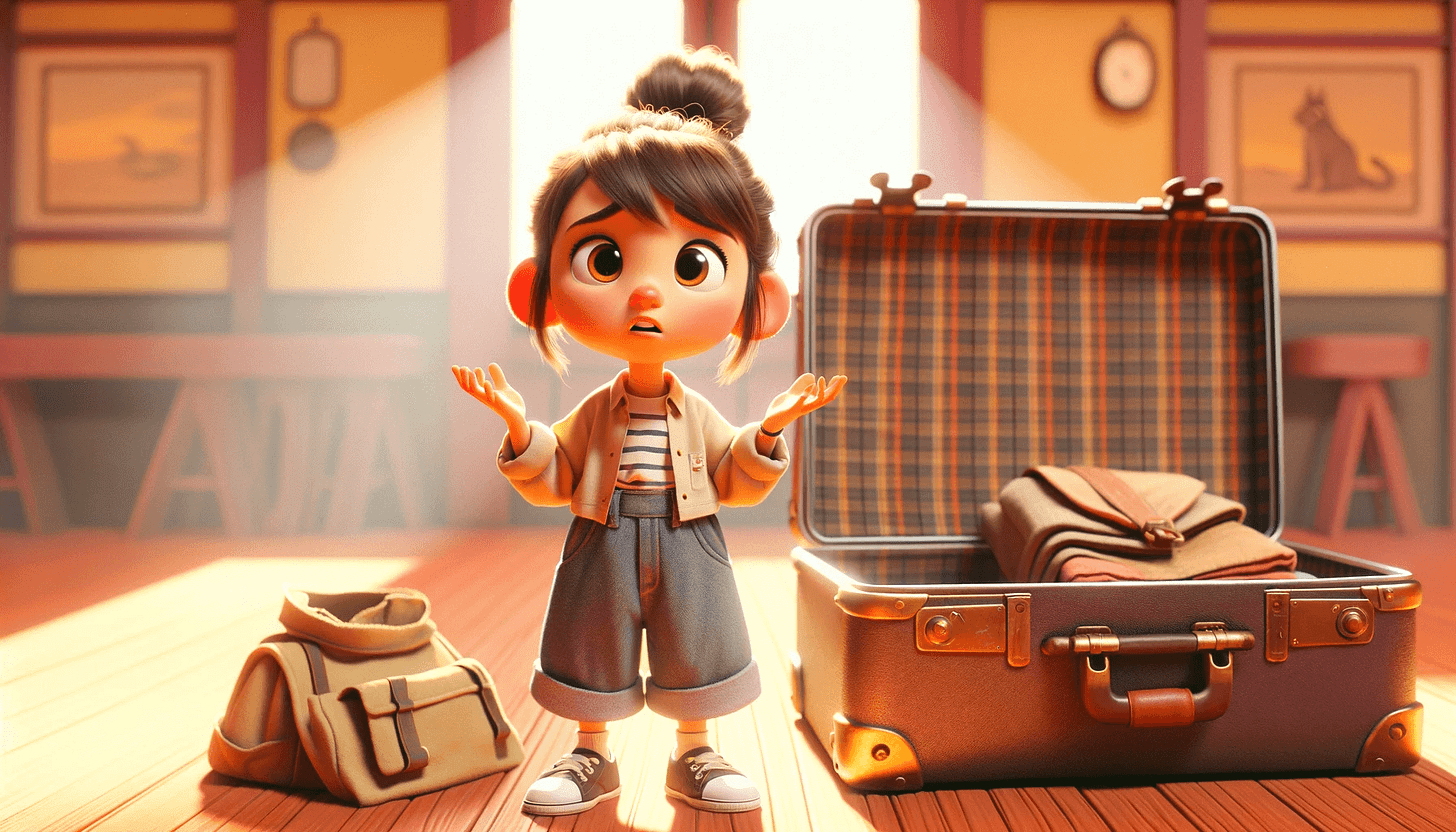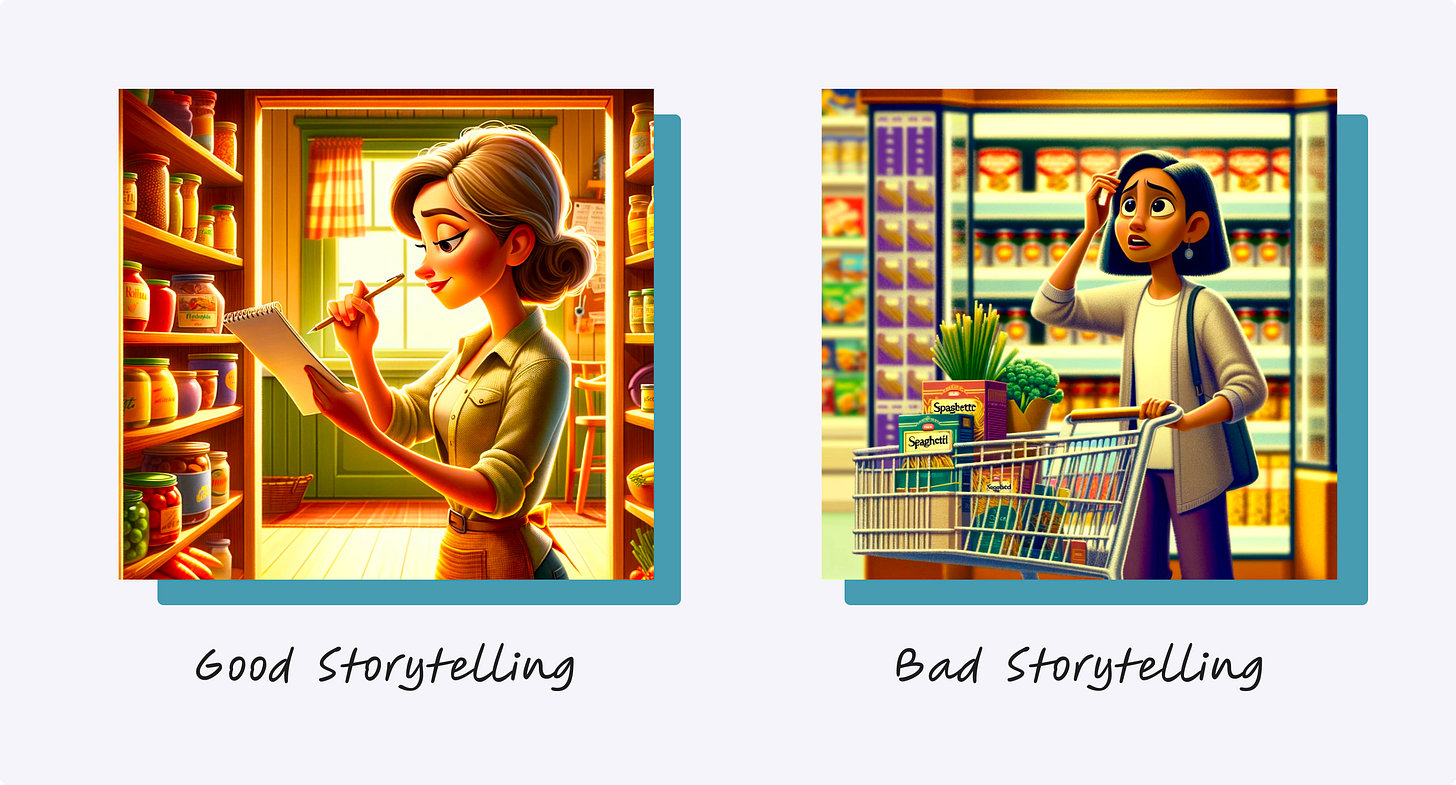🐉 The power of Storytelling and about how it transforms our designs.
🐉 The power of Storytelling and about how it transforms our designs. |
Engaging narratives and emotional connections transform user experiences from ordinary to extraordinary! Happy Sunday, lovely design Peeps; and a merry Christmas Eve! In today’s newsletter we are going to talk about: 🌪️ The Power of Storytelling: what it does to our brain 🥷🏼 How to craft engaging stories in UX 🎬 3 examples of excellent storytelling in UX
As the fire crackled and the stars started sparkling and lighting up the night sky, Lawrence began to tell a story. This wasn't just any story; it was the tale of humans huddled around fires, sharing teachings that wove the fabric of communities, evolving into the captivating cave paintings and mystical hieroglyphs of ancient Egypt. As the written word emerged, scriptures like the Bible narrated stories that shaped civilizations and beliefs. The printing press then flung open the gates of knowledge, allowing those same stories to travel far and wide. Now, in our digital age, storytelling continues to enchant and connect us, spinning new interactive webs across the globe, forever connecting human history and identity. 🌪️ The Power of Storytelling: what it does to our brainI think we can all agree that storytelling engages us a lot more than just a continuous ramble of dry facts. Maybe its because inherently we (most of us at least) retain information better when it gets presented in story format. We live chronologically, and therefore, our brains like structured timelines. Movies with a puzzle format, where we have to uncover the plot through a series of flashbacks and recordings of past events, are so intriguing and captivating but only make sense when the storyline is well thought out. Similarly, when something doesn’t add up and we feel like there are holes in our timelines, we tend to think that the story is buggy and doesn’t make sense. Many different parts of our brain (like motor and sensory cortices, as well as language comprehension centers) get tickled when we hear a good story. Good story meaning a well rounded story, usually divided in three acts: a beginning, a climax and an end or resolution.
There are several factors that contribute to our neural response when it comes to storytelling:
🥷🏼 How to craft engaging stories in UXI often get asked “Storytelling is a cool thing… but how is that supposed to work in my UX project?” Most designers understand what storytelling means when it comes to case studies, so I’m not going to get into that too much (let me know in the comments if I’m wrong, I’ll rectify that!) In UX, storytelling will pick the user up wherever they experience the problem we are solving and, ideally, walk them through the solution we came up with, without them having to think too much.
This can be achieved by simplifying complex concepts, through a deep understanding of the user:
These are just examples, of course there are many more ways of understanding our users. It is also very important to understand the user journey, and how they interact with the product we have designed along the way. We need to understand touchpoints, and when or where we can expect for them to do or feel a certain way.
Ideally, User Experience will use Storytelling and a clean User Interface to guide users through the journey with a clear beginning, middle and end. We know that stories evoke emotions, which can create memorable experiences. In UX these emotions are set by several factors, one of them being how seamless the experience is. Can I, as the user, navigate through the main task flow without hickups? Let’s take an image sharing application as an example. What we want to accomplish is taking images we have already shot and uploading them to the platform. But if we don’t have any images already taken, we should have the opportunity to open our camera and take them in real time. Then we can edit them without closing the app or downloading and opening a new one. Once published, we can see our comments and likes, and we can share it with friends without having to create any additional posts that we have to then manually upload to another social media app.
If we want to simplify it even more, picture this: You are planning on inviting some friends over for dinner. You have decided that you are going to make Spaghetti Bolognese from scratch. Good Storytelling would be: you go to your pantry, and start taking out all the ingredients you need, taking a piece of paper to write down which ones you are missing, so you can go to the grocery store to get them. Then, after you come back from the grocery store, you start preparing and cooking the meal. Bad Storytelling, on the other hand, would go as follows: you glance over the pantry, grab your keys and go to the store, where you buy wine and cookies, some tomatoes, some spaghetti (just in case you don’t have enough), and maybe some chips you can serve your friends while they wait (because you know you won’t be done by the time they get there). You get back home and you realize, with 45 minutes left before your friends arrive, that you actually didn’t buy any beef. Your spice cabinet is also half empty. You look at the seven packs of spaghetti in your pantry and remember that you also didn’t get Stella, your friend who doesn’t like alcohol, anything to drink either… See the problem? Because the way to a smooth cooking experience is not paved properly, you are going to have to create patch solutions that won’t make the event as enjoyable. 🎬
|
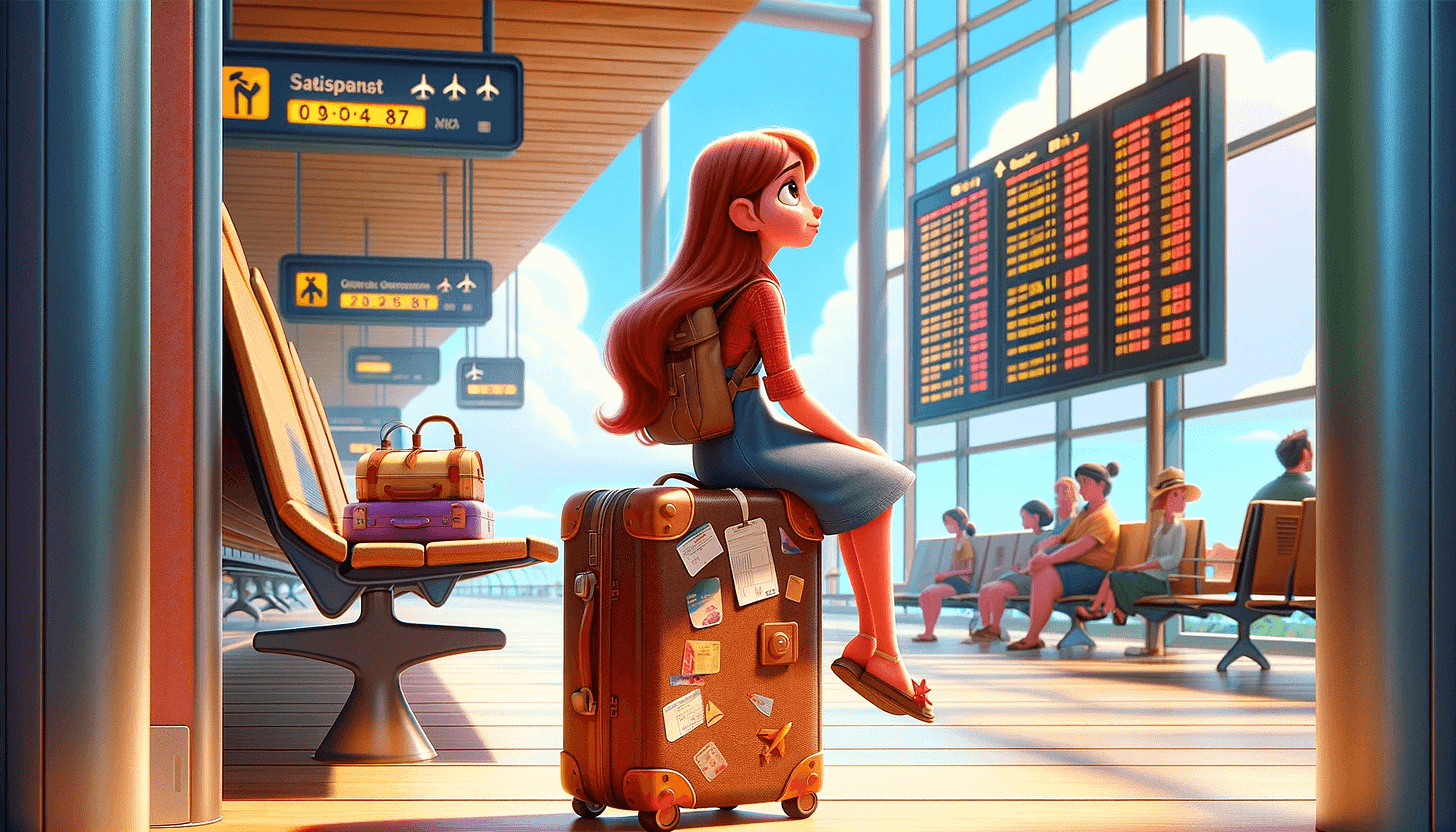 |
- Airbnb: Think of how Airbnb turns a simple booking process into a journey of discovering unique homes and experiences. It's not just about finding a place to stay; it's about crafting your own adventure.
- Duolingo: The language-learning app excels in making education fun through storytelling. Each lesson is like a mini-adventure, making learning a new language an engaging and entertaining experience.
- Headspace: Without a doubt my favorite when it coms to Storytelling. Starting with their onboarding, Headspace takes you on a journey! With engaging narrated meditations, animated videos, their mindful moments and your personal journey, Headspace really uses storytelling to their advantage.
- Bonus: Snelweg Sprookjes is an initiative by Volkswagen, who hired the agency Achtung! to reduce screentime, by mapping 5,000km on highway and tying modules in their audiobooks to the elements of the landscape. They reported children request to go to the grocery store on the highway.
The Future of Storytelling in UX 🚀🔮
The role of Storytelling in UX is constantly evolving. This is due to the fact that additional technologies make certain steps obsolete, or make it harder for users to engage with the product where those technologies are missing. Are we relying on technology too much? Subscribe to find out!
For instance: Fitness apps are becoming more and more dependent on wearable data. Without these datapoints, the apps are still usable, but the experience becomes less delightful.
The same thing happens with sleep analyzers. If you don’t sleep with your phone under your pillow, the data won’t be as accurate.
We need to also understand… bad UX is also UX. It’s up to us, the designers, to make the User Experience a good one. Storytelling is just one way to do it. An important one. Other ways of doing it could be gamification; which is our topic for next week.
Keep designing.
-D.

